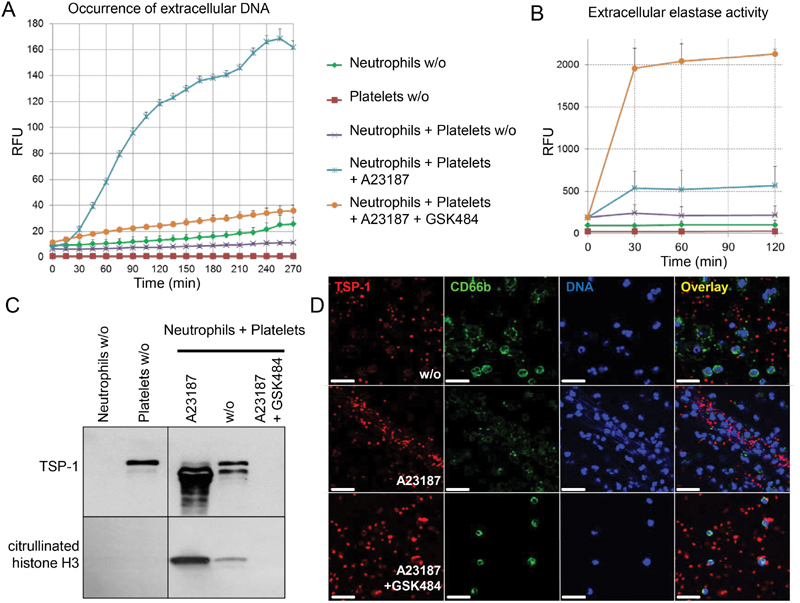Fig. 5.

Impact of neutrophil extracellular trap (NET) formation on neutrophil-mediated proteolysis of thrombospondin-1 (TSP-1). Co-cultures of neutrophils and platelets were left untreated or stimulated with 4 µM A23187 in the absence or presence of the NETosis inhibitor GSK484 at 2 mM. ( A ) Release of neutrophil deoxyribonucleic acid (DNA) was assessed by incorporation of Sytox Green dye and measurement of relative fluorescence units (RFUs) over 5 hours. ( B ) Elastase was evaluated by activity assay. Supernatant was retrieved after 0, 30, 60 and 120 minutes. ( C ) Occurrence of TSP-1 isoforms (upper panel) and citrullination of histone H3 (lower panel) was determined at 120 minutes by immunoblotting. ( D ) Co-cultures seeded on cover slips were left untreated (w/o), stimulated by 4 µM A23187 for NET formation or exposed to A23187 in the presence of 2 mM GSK484 to block NETosis. After fixation and permeabilization, cultures were stained for TSP-1 (red), the granulocyte marker CD66b (green) and DNA (blue). Scale bar: 20 µm. All experiments were repeated at least three times with cells isolated from different human donors. Immunoblots and fluorescence images depict one representative experiment, while DNA release and elastase activity data are given as mean and standard deviation of three independent experiments.
